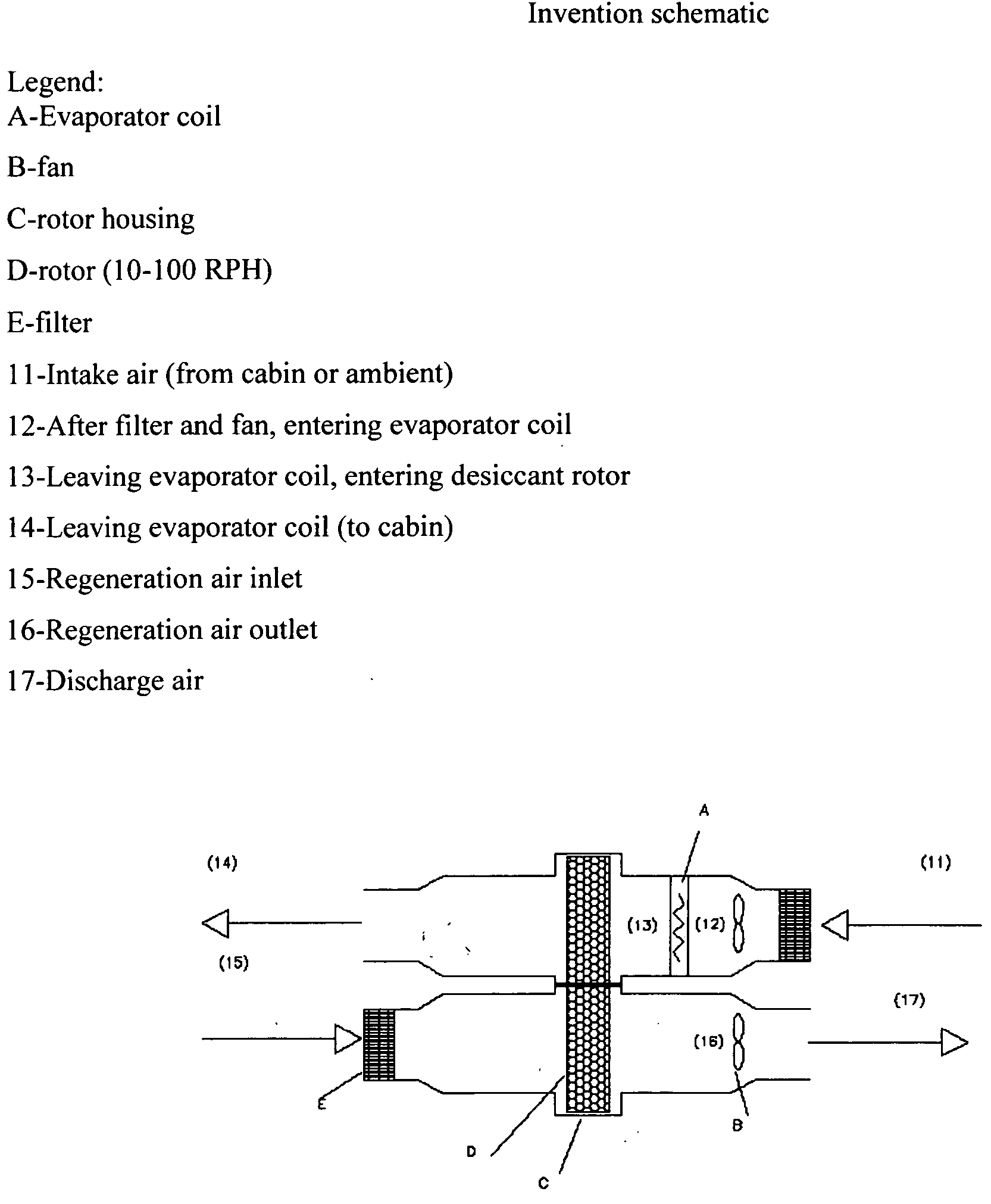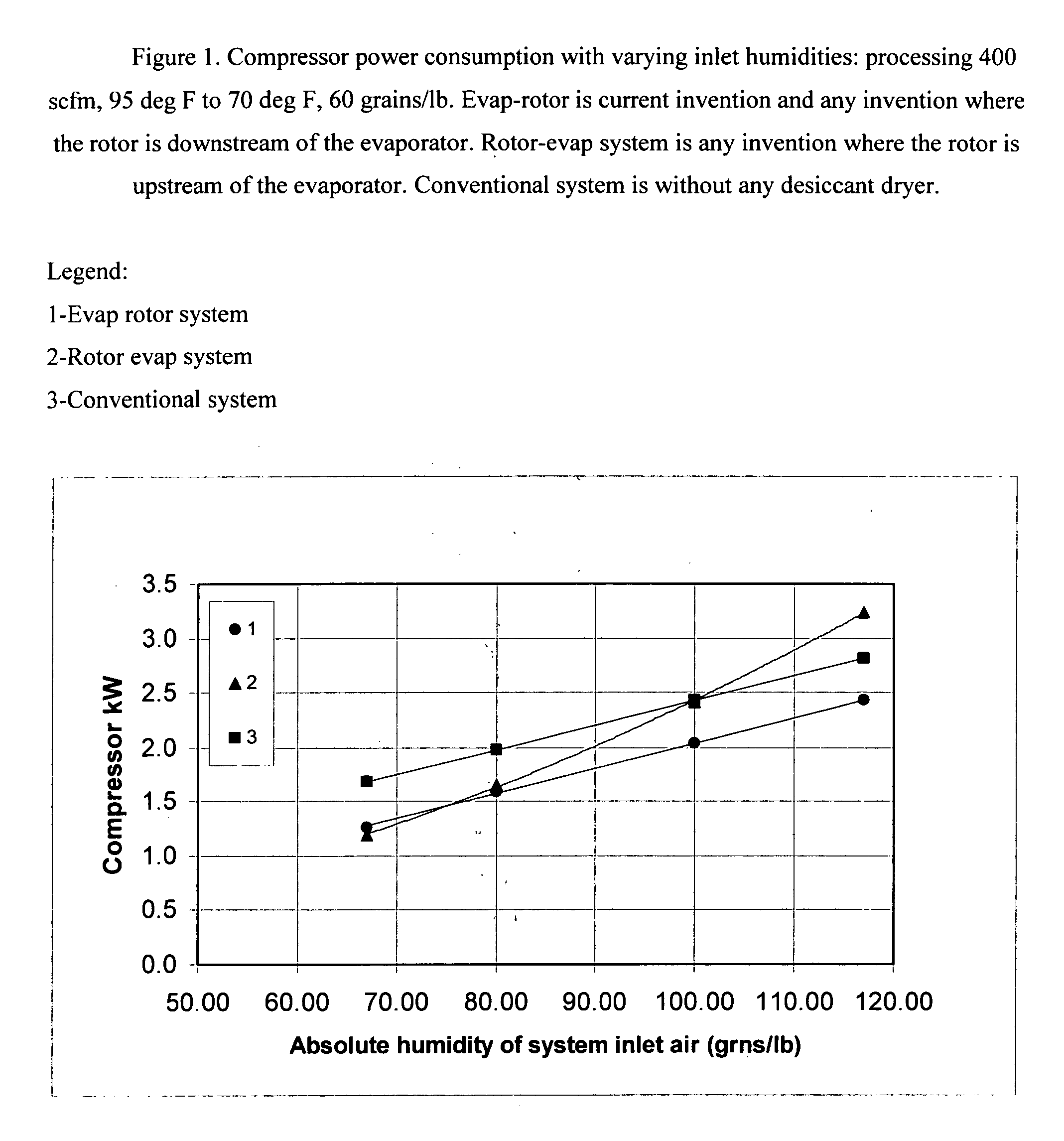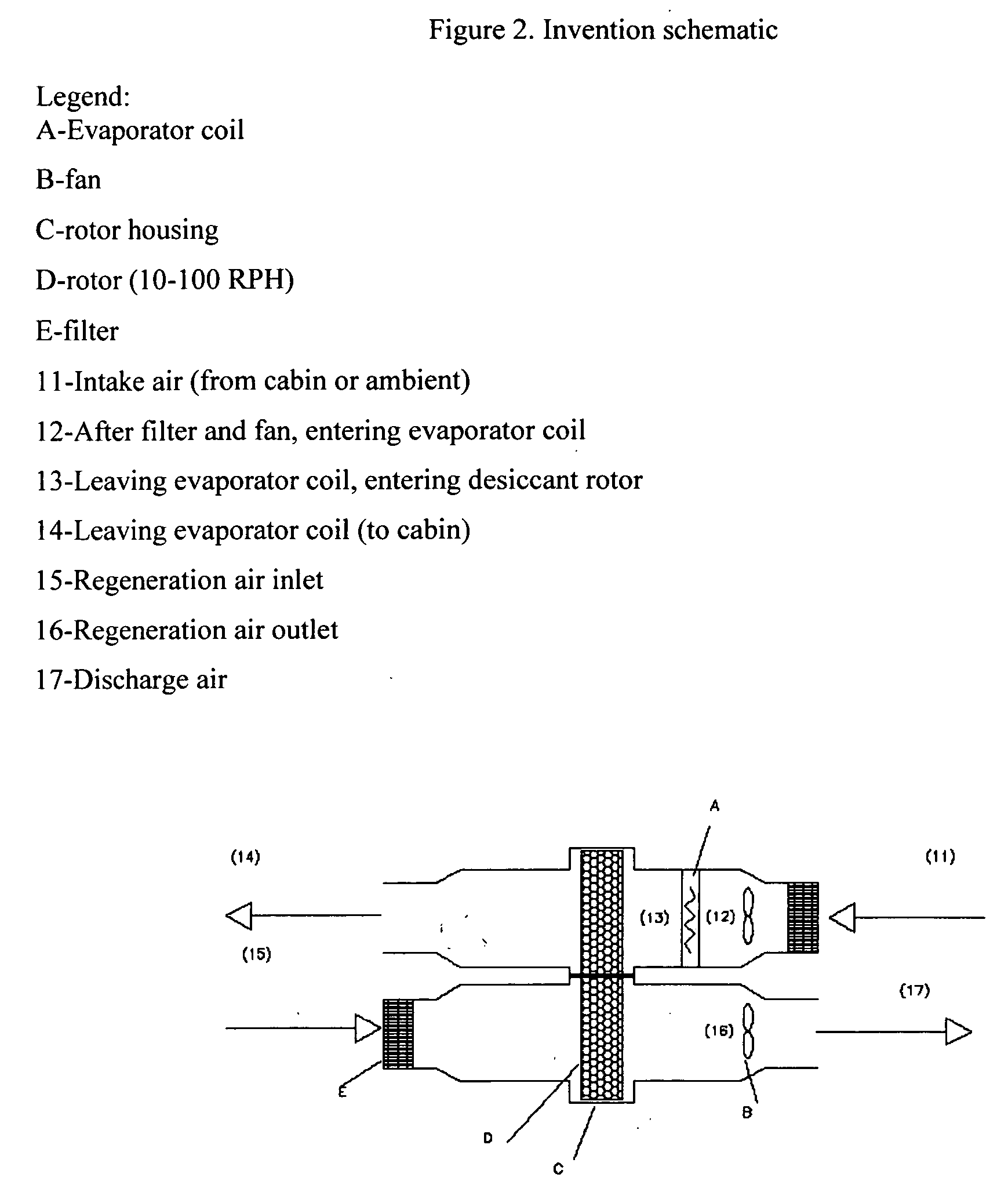Rotor desiccant air-conditioning system for a motor vehicle
- Summary
- Abstract
- Description
- Claims
- Application Information
AI Technical Summary
Benefits of technology
Problems solved by technology
Method used
Image
Examples
Embodiment Construction
[0026]FIG. 2 is an illustration of the configuration of the invention where the desiccant rotor is downstream of the evaporator coil. The air being processed passes through the filter, the fan, and the evaporator coil where the air is cooled and dehumidified, then through the desiccant rotor where the air is dried and heated.
[0027] An analysis was performed on the configuration of this invention (evap-rotor) vs. a configuration where the desiccant is placed upstream of the evaporator (rotor-evap).
[0028] A model developed by Chant and Jeter (1995) for rotary desiccant wheels was used to simulate the desiccant rotor. In addition to the validation performed on the model described in the paper, the model was adapted to the Engelhard HexCore rotor and validated with data collected at the National Renewable Energy Laboratory in 1998. The model's latent capacity predictions for HexCore's hexagonal passage, Nomex core coated with titanium silicate desiccant were within + / −10% and the outl...
PUM
 Login to View More
Login to View More Abstract
Description
Claims
Application Information
 Login to View More
Login to View More - R&D
- Intellectual Property
- Life Sciences
- Materials
- Tech Scout
- Unparalleled Data Quality
- Higher Quality Content
- 60% Fewer Hallucinations
Browse by: Latest US Patents, China's latest patents, Technical Efficacy Thesaurus, Application Domain, Technology Topic, Popular Technical Reports.
© 2025 PatSnap. All rights reserved.Legal|Privacy policy|Modern Slavery Act Transparency Statement|Sitemap|About US| Contact US: help@patsnap.com



